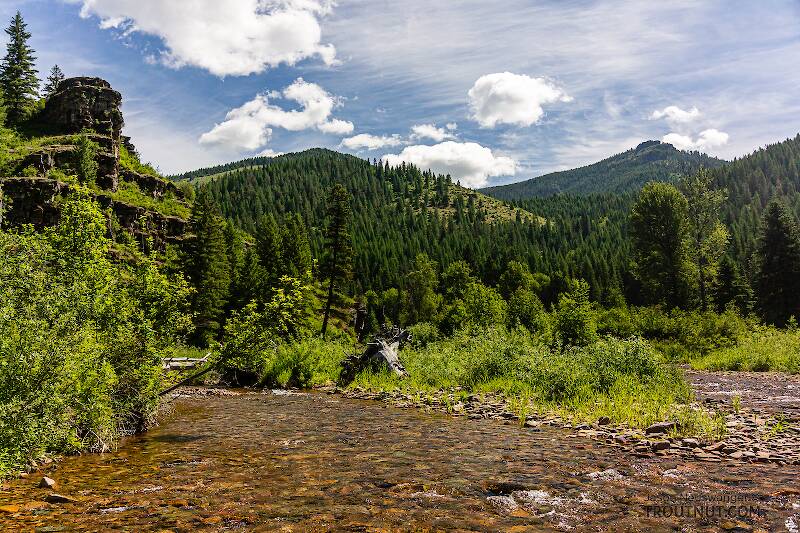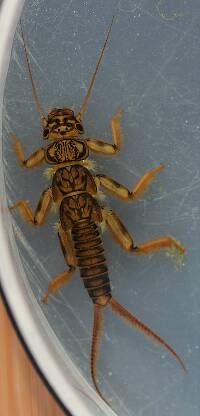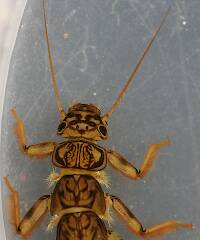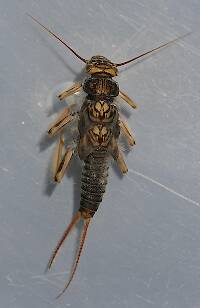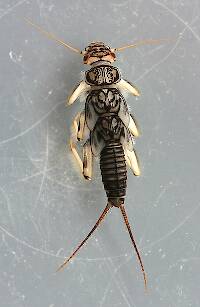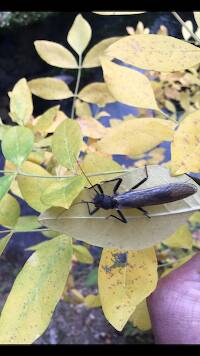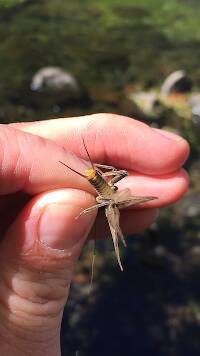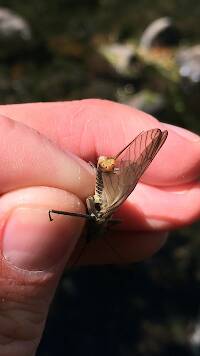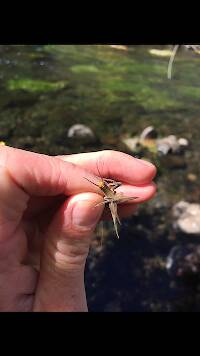
Hex Mayflies
Hexagenia limbata
The famous nocturnal Hex hatch of the Midwest (and a few other lucky locations) stirs to the surface mythically large brown trout that only touch streamers for the rest of the year.
Featured on the forum

This specimen resembled several others of around the same size and perhaps the same species, which were pretty common in my February sample from the upper Yakima. Unfortunately, I misplaced the specimen before I could get it under a microscope for a definitive ID.

Troutnut is a project started in 2003 by salmonid ecologist Jason "Troutnut" Neuswanger to help anglers and
fly tyers unabashedly embrace the entomological side of the sport. Learn more about Troutnut or
support the project for an enhanced experience here.
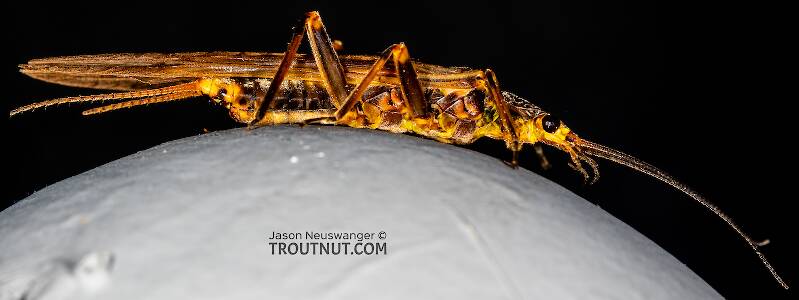
A few of these larger stoneflies were fluttering around the South Fork on an evening dominated by much smaller species.
This one has been difficult to identify. I can't spot any of the gill remnants characteristic of Perlidae, but the wing venation seems to point in that direction. I tried keying it out as Perlodidae but arrived at Isoperla, every western species of which has significantly smaller bodies than this one.
Edit: See forum comments for a likely correct identification.
This one has been difficult to identify. I can't spot any of the gill remnants characteristic of Perlidae, but the wing venation seems to point in that direction. I tried keying it out as Perlodidae but arrived at Isoperla, every western species of which has significantly smaller bodies than this one.
Edit: See forum comments for a likely correct identification.
Millcreek on Jul 22, 2019July 22nd, 2019, 9:18 am EDT
Hesperoperla or Calineuria. Just a guess. These are similar to ones I've netted in California. The gill remnants don't always show and can be difficult to spot when they do. The size is right and the wing veining as well.
Here's a picture at bugguide of Hesperoperla.
https://bugguide.net/node/view/1257709
I'm leaning more towards Calineuria.
https://www.zoology.ubc.ca/~biodiv/entomology/main/Plecoptera/Perlidae/Calineuria%20californica%20(1dorsal).jpg
And here's a view of Hesperoperla's wings.
https:/bugguide.net/node/view/41324/bgimage
Here's a picture at bugguide of Hesperoperla.
https://bugguide.net/node/view/1257709
I'm leaning more towards Calineuria.
https://www.zoology.ubc.ca/~biodiv/entomology/main/Plecoptera/Perlidae/Calineuria%20californica%20(1dorsal).jpg
And here's a view of Hesperoperla's wings.
https:/bugguide.net/node/view/41324/bgimage
"If we knew what it was we were doing, it would not be called research, would it?"
-Albert Einstein
-Albert Einstein
Troutnut on Jul 22, 2019July 22nd, 2019, 11:24 am EDT
Thanks. The color patterns at least looks extremely similar to this Calineuria californica from bugguide.net:
https://bugguide.net/node/view/368894/bgimage
I tried following the key in Merritt & Cummins to get there, but none of the relevant characteristics were very clear unfortunately.
What's the size range for that one? One source said they're the largest western Perlid, and this specimen certainly doesn't fit that bill.
https://bugguide.net/node/view/368894/bgimage
I tried following the key in Merritt & Cummins to get there, but none of the relevant characteristics were very clear unfortunately.
What's the size range for that one? One source said they're the largest western Perlid, and this specimen certainly doesn't fit that bill.
Jason Neuswanger, Ph.D.
Troutnut and salmonid ecologist
Troutnut and salmonid ecologist
Millcreek on Jul 22, 2019July 22nd, 2019, 12:26 pm EDT
The size range is from 15-25 mm from nose to tip of abdomen (not including the cerci). At least from this area of northern California.
"If we knew what it was we were doing, it would not be called research, would it?"
-Albert Einstein
-Albert Einstein
Quick Reply
Related Discussions
Topic
Replies
Last Reply
1
Jan 29, 2016
by Martinlf
by Martinlf
10
Sep 10, 2012
by PaulRoberts
by PaulRoberts
0
Jul 19, 2019
by Millcreek
by Millcreek
1
Apr 8, 2009
by Troutnut
by Troutnut
4
Sep 4, 2012
by Entoman
by Entoman

